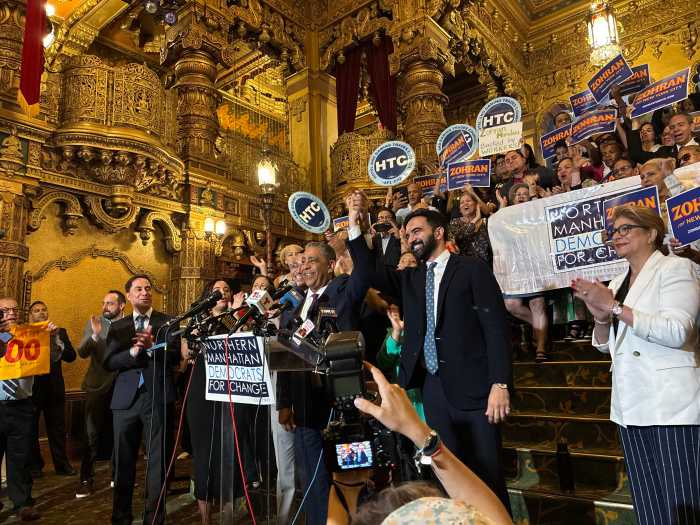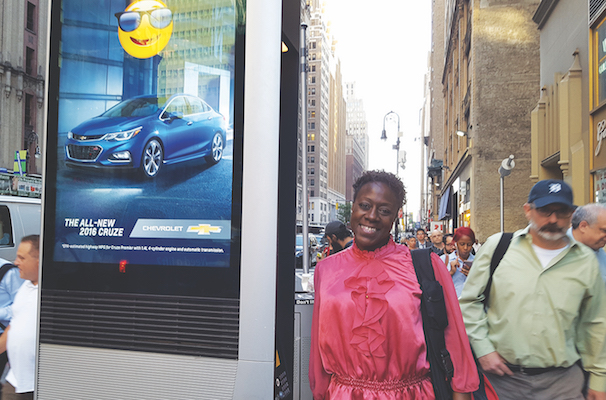
BY DUSICA SUE MALESEVIC | LinkNYC’s recent disabling of web browsing capabilities on its Wi-Fi kiosks has pitted quality of life concerns against a new technology’s promise of addressing New York’s continuing digital divide.
Following installation of the kiosks earlier this year, the effort to bridge that gap was quickly marred by users monopolizing the web browsers and, from multiple reports, at times viewing not-suitable-for-the-streets material.
It is unclear whether the web browsing function will be reinstated. If not, a source of Internet accessibility for those of lower incomes as well as homeless people has been cut off.
In New York City, 26 percent of households lack broadband Internet at home and 16 percent have no computer at all, according to “Internet Inequality: Broadband Access in NYC.” For the report, released in September 2015, City Comptroller Scott Stringer’s office analyzed data from the Census Bureau’s American Community Survey.
According to the report, 40 percent of those with less than a high school education lack broadband at home compared to 11 percent of those with a bachelor’s degree or more.
“Internet access has truly become the fourth utility, almost as critical to modern life as water, gas, and electricity — but there is still unequal access across our city,” Stringer said in an email statement.
LinkNYC, run by CityBridge under a contract awarded by the city, started rolling out earlier this year, and thus far 400 kiosks have been installed citywide.
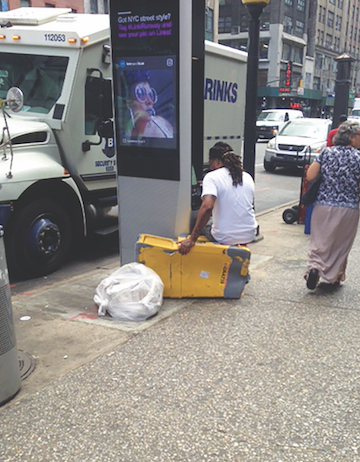
Natalie Grybauskas, a spokesperson for Mayor Bill de Blasio’s office, said in an email that LinkNYC’s purpose was always to bring free Wi-Fi to the city’s streets and sidewalks, and she pointed out that the tablets still provide access to city services through 311 online. She said there are other places in the city, such as libraries and the New York City Housing Authority’s digital vans, where computers are available for public use.
“There were concerns about loitering and extended use of LinkNYC kiosks, so the mayor is addressing these quality of life complaints head on,” she said in an email. “Removing the Internet browser from LinkNYC tablets will not affect the other great services LinkNYC provides — superfast Wi-Fi, free phone calls, or access to key city services — but will address concerns we’ve heard from our fellow New Yorkers.”
BerlinRosen, the public relations firm representing LinkNYC, and the city’s Department of Information Technology & Telecommunications (DoITT) declined to answer questions concerning a timeframe for bringing back web browsing and whether it is permanently or just temporarily disabled.
In a September 14 story, the New York Times reported that LinkNYC was “switch[ing] off the browsing functions on the computer tablets built into the kiosks as a temporary solution while they consider permanent changes.”
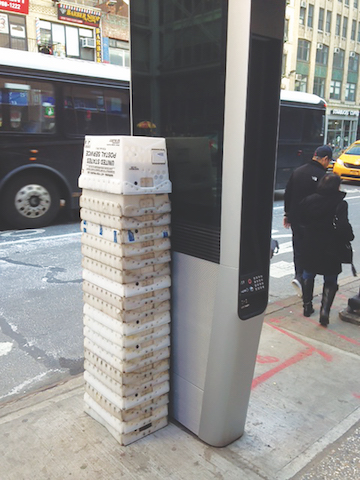
According to block associations, community groups, and residents, problems were particularly pronounced on Eighth Avenue in Midtown. Neither BerlinRosen nor DoITT responded to questions concerning the number and nature of the complaints they received about the kiosks.
John A. Mudd, president of the Midtown South Community Council, said the problem “started blossoming in June.”
“They would play chess,” Mudd said in a phone interview. “They would watch porn. Music videos were big.”
Crowded around the kiosks, people would stay there all night and use overturned newspaper boxes and United States Postal Service crates as couches and chairs, he said. Mudd also charged that drug sellers were operating out of the kiosks.
“The hottest spot was 40th and Eighth Avenue,” he said. “It was a daily thing.”
Mudd said he heard from business owners, hotel managers, and local residents about the problems.
Since the web browsing has been disabled, he said, “It’s like night and day from what it was and now. It’s a tremendous change.”
Barbara Blair, president of the Garment District Alliance, said, “The complaints started the minute the links went into service.”
A business improvement district that runs between 35th and 41st Streets from Fifth to Ninth Avenues, the Garment District Alliance, Blair said, received daily complaints immediately after the kiosks went into service in April. Homeless people, she said, gathered around the kiosks and would use thrown-out furniture to sit on.
“It can’t be used as an entertainment tool,” said Blair, who added that the kiosks exacerbated quality of life concerns in the area, home to Penn Station and the Port Authority Bus Terminal, a parole board office, and numerous social service agencies. Since the web browsing has been disconnected, Blair said, the Alliance has received zero complaints.
David Achelis, president of the West 50s Neighborhood Association, echoed the complaints from Blair and Mudd.
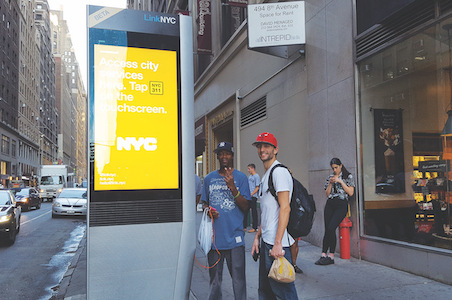
“As soon as the thing was up and running… the homeless made it their encampment,” he said in a phone interview. “Certain homeless take over certain towers and make them their own.”
Achelis, who is also a member of Community Board 5, said a kiosk in front of Matt’s Grill at 932 Eighth Avenue near West 55th Street — where he bartends — became a problem by late spring.
“No one knew what they would look like and how they would encroach on the neighborhood,” he said. “There are some places that the towers are so inappropriate; some they’re fine.”
Achelis said the problem persists at the kiosk outside Matt’s Grill despite the web browsing being disabled, and he thinks that some of the towers need to be removed.
“These things are large,” Achelis said. “They are more useless advertising that communities don’t need.”
Achelis, Blair, Mudd, and other groups brought their complaints to City Councilmember Corey Johnson’s office. Johnson, in an email, acknowledged that his office also got calls from residents and that he personally noticed some instances of abuse.
“It was clear from early on that this was a real problem for many constituents,” he wrote. “When all of these various block associations and community councils and BIDs are reaching out at the same time about the same thing, you know that the issue is affecting a lot of people. It was really a resounding response.”
Though the response to disabling the browsers has been positive, Johnson said, his office is “not taking our eye off this yet.” And, he added, there is a moratorium on LinkNYC installing more kiosks on Eighth Avenue that will continue “until we’re confident that the big issues have been resolved. Things are looking better, but it’s too soon to install more kiosks. We’re in ‘wait and see’ mode right now.”
Asked whether there is any NIMBY-ism involved with the complaints based in part on the increased visibility of homeless people due to the availability of web access, Johnson responded that LinkNYC was never intended to allow unlimited web browsing on the street.
“When it became clear that this was a side effect of this program, we had to address it and find a way to prevent people, regardless of housing status, from using these kiosks as personal computers,” he said. “Expanding access to technology among homeless New Yorkers is something we should absolutely pursue, but that’s a separate issue from resolving the problems that were at hand with LinkNYC.”
At this point, in order to connect to a kiosk’s Wi-Fi, a smartphone or similar device is required. According to “New York City Mobile Services Study,” a November 2015 city Department of Consumer Affairs research brief, 79 percent of those surveyed had a smartphone.
A recent late afternoon weekday walk up Eighth Avenue from Chelsea to Times Square found no one huddled around LinkNYC kiosks — and no street furniture pulled up to them to facilitate watching the monitor. Some kiosks were not in use, while others were being used to make calls or to charge phones.
Ian Defibaugh, 45, a Hell’s Kitchen resident was charging his phone at a kiosk at West 26th Street and Eighth Avenue.
“When they first put them up, I thought it was the dumbest idea,” said Defibaugh, who acknowledged he now uses them frequently.
“It’s been charging really, really fast,” he said. “I’ve been very happy with it.”
James Gambardella, 24, agreed.
“It’s super convenient,” he said at a kiosk at West 35th Street and Eighth Avenue. “If you’re in a pinch, you can charge your phone.”
Gambardella, a Chelsea resident, was charging his phone while Damon Callaway, a Bronx resident, was also at the station.
Callaway, 52, said, “It’s a good thing for the public.” He said he uses the kiosk to charge his phone so he can listen to music on it. “I’ve got to put gas in the car,” he said with a smile, referring to charging his phone.
Three blocks up, on West 39th Street, Veronica Elliott, 50, was dismayed to learn that the web browsing had been disconnected. She had been using it look up information.
“Oh no. Is it coming back?” she asked. “The Internet is very useful — especially if you don’t have a laptop.”
She added, “I think more people need the Internet than not. I don’t think they should discontinue the service.”





